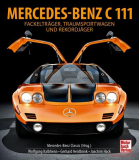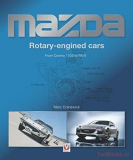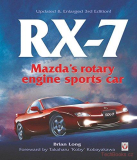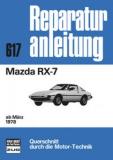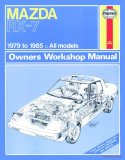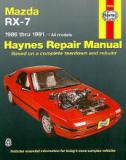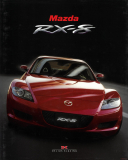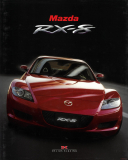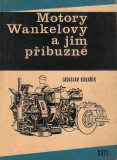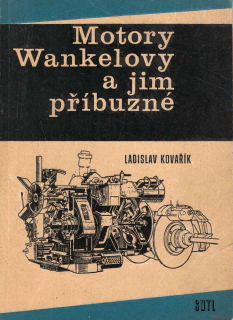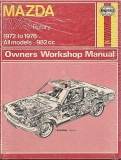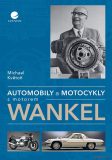E-shop
- * CD/DVD/BLU-RAY
- * Dárkové poukazy
- * Kalendáře
- * Magazíny
- * NAVIONICS
- * Plakáty a grafické listy
- * Prospekty a brožury
- * Slovníky
- ATV, čtyřkolky, sněžné skůtry
- Autobusy, tramvaje, trolejbusy
- Automobily osobní a dodávky
- _Automobilová technika
- _Autokatalogy
- _Caravaning
- _Design
- _Elektromobily & hybridy
- _Karosárny & karosáři
- _Osobnosti & konstruktéři
- _Repliky / kitcars / stavby
- _Sbírky a muzea
- _Sport
- _Veteráni
- Abarth
- AC
- Acura
- Adler
- Aero
- Africar
- Alfa Romeo
- Allard
- Allstate
- Alpine
- Alvis
- AM General
- AMC
- Americké automobily
- Armstrong Siddeley
- ARO
- ASA
- Aston Martin
- Auburn
- Audi
- Austin
- Austin-Healey
- Austro-Daimler
- Auto Union
- Autobianchi
- Ballot
- Bantam
- Barkas
- Bedford
- Bentley
- Benz
- Berkeley
- Bitter
- Bizzarrini
- BMW
- Bond
- Borgward
- Brabham
- Bricklin
- Bristol
- British Leyland
- BRM
- Brough Superior
- BSA
- Bugatti
- Buick
- Cadillac
- Callaway
- Caterham
- Citroen
- Cisitalia
- Clan
- Colt
- Cord
- Crosley
- Crossley
- Cunningham
- Dacia
- Daewoo
- DAF
- Daihatsu
- Daimler
- Dallara
- Darracq
- Datsun
- De Dietrich
- De Dion
- Delage
- Delahaye
- DeLorean
- Denzel
- DeSoto
- De Tomaso
- Diatto
- Dixi
- DKW
- Dodge
- Duesenberg
- Eagle
- Edsel
- Elva
- EMW
- ERA
- Excalibur
- Facel Vega
- Falcon
- Ferrari
- Fiat
- Ford
- Ford USA
- Frazer-Nash
- FSO Fiat Polski
- General Motors
- Genesis
- Geo
- Ginetta
- Gilbern
- Glas
- GMC
- Goggomobil
- Goliath
- Gutbrod
- Hanomag
- Hartnett
- Healey
- Henney
- Hillman
- Hino
- Hispano Suiza
- Holden
- Hommell
- Honda
- Horch
- Hotchkiss
- Hudson
- Humber
- Hummer/Humvee
- Hyundai
- Checker
- Chevrolet
- Chrysler
- Chrysler Europe
- IFA
- Imperial
- Infiniti
- Innocenti
- Intermeccanica
- International
- Invicta
- ISO
- Isotta-Fraschini
- Isuzu
- Itala
- Iveco
- Jaguar
- Jeep
- Jensen
- Jowett
- Kaiser-Frazer
- Karmann
- KdF
- Kia
- Lada/VAZ
- Lagonda
- Lamborghini
- Lancia
- Lanchester
- Land Rover
- Laurin-Klement
- La Salle
- Lea-Francis
- Lexus
- Light Car Co.
- Ligier
- Lincoln
- Lloyd
- LMX
- Locomobile
- Lola
- London Taxi Intl.
- Lotus
- Marendaz
- Marcos
- March
- Marmon
- Maserati
- Matra-Simca
- Maybach
- Mazda
- McLaren
- Mercedes-Benz
- Mercury
- Messerschmitt
- Metalex
- MG
- Mini
- Mitsubishi
- Monica
- Monteverdi
- Moretti
- Morgan
- Morris
- Moskvič
- Muntz
- Nash
- Nissan
- Noble
- NSU
- Oldsmobile
- Oltcit
- Opel
- OSCA
- Packard
- Pagani
- Panhard
- Panoz
- Panther
- Peerless
- Pegaso
- Peugeot
- Park Ward
- Pierce-Arrow
- Plymouth
- Pontiac
- Porsche
- Praga
- Puch
- Puma
- Rambler
- Range Rover
- Reliant
- Renault
- Proton
- Railton
- Riley
- Riva
- Rochdale
- Rolls-Royce
- Rover
- Röhr
- Saab
- Saturn
- Scioneri
- Seat
- Shelby
- Schustala
- Simca
- Singer
- Smart
- Spyker
- Standard D
- Standard GB
- Stanguellini
- Steyr
- Studebaker
- Subaru
- Stutz
- Sunbeam
- Suzuki
- Swallow
- Syrena
- Škoda
- Talbot
- Tarpan
- Tatra
- Terraplane
- Tesla
- Tojeiro
- Toyota
- Trabant
- Trident
- Triumph
- Tucker
- TVR
- Tyrrell
- UAZ
- Unipower
- Vanwall
- Vanden Plas
- Vauxhall
- Vector
- Venturi
- Voisin
- Volha / GAZ / Čajka
- Volkswagen
- Volvo
- Walter
- Wanderer
- Wartburg
- Warszawa
- Wiesmann
- Wikov
- Westfield
- Williams
- Willys
- Wolseley
- Yugo/Zastava
- Zagato
- ZAZ
- Zbrojovka
- ZIL
- Zimmer
- Automobily nákladní a tahače
- Cyklistika
- Hudební nástroje, hudba
- Letectví, kosmonautika
- Lodě, lodní technika
- Malá motorová technika
- Modely a sběratelství
- Motocykly
- Počítače, IT
- Traktory, zemědělská technika
- Železniční technika, vlaky
- Zbraně, vojenská technika
- Zdraví, domácnost, sport


![]()



![]()


![]()

![]()

![]()



Úvod »Automobily osobní a dodávky»Spyker » The Wankel engine: design, development, applications
Anotace
| Vazba: | Vázaná | ||
| Počet stran: | 520 | ||
| Rozměry v mm: | 160 x 240 | ||
| Počet obrázků: | 500 | ||
| Rok vydání: | 1972 | ||
| Vydání: | 1. | ||
"If we are to try to make up our minds abou the role of the Wankel engine in tomorrow' transportation picture . . . we need informa tion about the engine" . . . and "we mus take full account of its rivals, and of all con ditions (legal, environmental, economical and supply-related) that affect the choice o power generation equipment for . . . vehicu lar transport." Here in essence is the premise on whict the author bases his account of the automo tive rotary power plant, known generally a! the Wankel engine, developed principally b) Felix Wankel and now the subject of intense concentration on the part of automotive en. gineers around the world. Mr. Norbye's qualifications to write on the Wankel engine are ideal, not to say impres-sive: he is an automotive engineering writes with an international reputation; he had ac-cess to fat files of papers, documents and drawings relating to the engine's develop-ment that extend from the patent drawings in Germany to the latest designs of Toyo Kogyo in Japan; he has driven, road-tested and reported on such prototype Wankel ma-chines as the Mercedes-Benz, the Mazda and the NSU; he has discussed the pros and cons of many rotary engines with the engineers who work with them and who have high hopes for them. As a consequence, he pre-sents in The Wankel Engine a well rounded view of the present Wankel scene and some well founded conclusions concerned with the Wankel's possibilities for automotive use. In Section I on Design, Norbye takes up Principles of Operation, Geometry, Displace-ment, Scaling (long a problem area with rotary engines), The Combustion Process, Housing and Rotor Cooling, and Advantages of the Wankel Engine. Section II on Devel-opment covers the beginnings and ranges to the latest on Exhaust Emissions — a wide span including engineering and testing work done by Felix Wankel, NSU, Curtiss-Wright, Toyo Kogyo, Daimler-Benz, Citroen, and other Wankel license holders. Section III on applications comprises individual chapters on the most notable prototype Wankel en-gined cars in existence today, among them the NSU Spider and Ro-80, the Mazda (Jap-anese) Cosmo, R-100 and other rotaries, the Citroen M-3 5, the Mercedes-Benz C-111 and the Mustang RC2-60. Here we have a first-hand, objective appraisal of the cars them-selves, drawn in large from experience behind the wheel, and in part from comparing notes with factory test drivers and engineers. In this section, too, we get Norbye's personal impressions of performance and handling—a most valuable addition to the coolly stated facts of Wankel history, design and devel-opment. The Wankel Engine brings into focus from a mass of astigmatic material what is essential to know about a radically different, highly promising, old-new engine principle—the rotary—in the search for the ultimate auto power plant.



